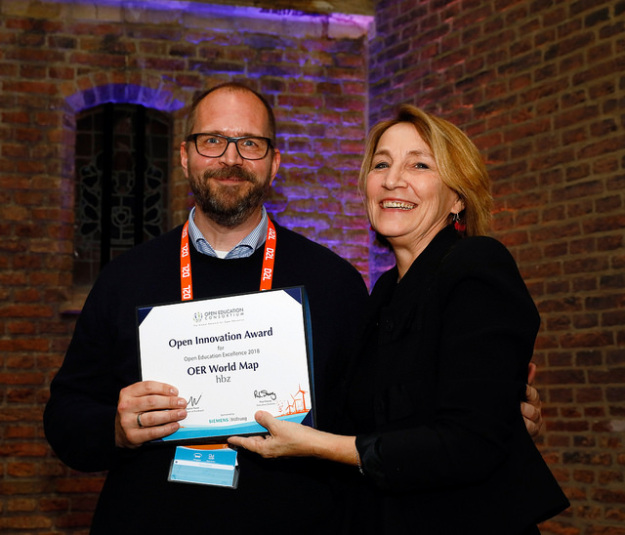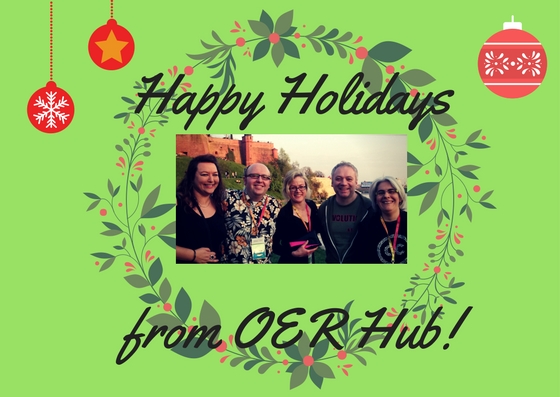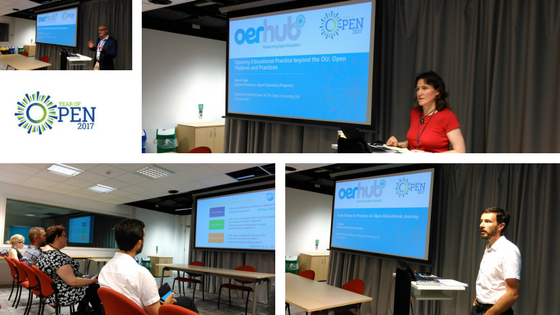Greetings from Houston! The First Personalized Learning Workshop at Rice University is underway… I’ve been tweeting from the conference (check out @Beck Pitt), but also wrote a blog post to cover the first of the morning sessions. So (better late than never) here goes…
Remarking on the “personalized Houston weather” as fitting for the conference, Vice Provost Caroline Levander welcomed us to Rice with an overview of activities across campus: from STEMscopes, Connexions and OpenStax to Rice “experimenting with” Coursera and EdX… Richard Baraniuk (Rice) followed with an overview of the workshop theme “Scaling Up Success.” Highlighting the problem of “one-size-fits-all learning” Richard noted that how the “globally exploding phenomenon” of Ed Tech (with $1 billion worth of investment in the last year) was perceived as being a solution to this issue. However, despite this, “What is different this time?” According to Richard, the shift away from “broadcast technologies” has heralded the opportunity to get hold of data about how students use course materials online, analyse it and “close the learning feedback loop”. This is the difference between the past and present. Richard closed his Introduction by remarking on issues which need to be addressed as part of this process: 1) Cost: currently prohibitive (citing Inquire’s attempt to personalise learning); 2) Adoption: training for educators and students: “people want learning to be quick and easy” whilst there is often “disappointment” 3) What do we mean by “optimising learning”? 4) “Privacy issues” (e.g. FERPA) also need to be addressed in order for research to be carried out effectively. Handing over to Reid Whitaker of STEMscopes (who introduced us to the K12 science program started in 2010 which is used by 1.2 million students and ca. 40K schools) to close this Intro, it was of note that in a poll of the audience composition, 2/3 of attendees are linked to K12 learning.
The “Firehose of Data”
David Kuntz has been at Knewton for 4 out of its 5 years. Interested in how we can use data on student learning to help get “big data for what and how you learn…” Knewton is built on the Amazon webservice: AWS. David described how Amazon created an infrastructure which enables others to easily build and create educational apps. 60,000 courses with “personalisation services” across a range of subjects with more forthcoming. Wiley, Pearson and others using Knewton API (application programming interface): crosses programme languages. Knewton API aims to identify the next steps for students so that they can achieve and to understand individual students’ needs so that they have the eureka moment (“continuously personalised, differentiated learning experiences for each student”).
David noted that there are “management problems” potentially for educators, in addition to state requirements, that need to be taken into account. “Targeted recommendations” were noted as one solution (e.g. focusing in on particular solutions that addressed common student concerns). David described a scenario of engagement with one billion students (and the potential for “a fire-hose of data”): a question of how to scale and use this data effectively… and give student what they need immediately.
“Psychometrics”: content/students. “assumptions which are violated” – “test environment” “students learn and forget” things – usually this isn’t taken this into account. How do you sort information, coming from different sources and “standardise” it, then understand it? System and solution needs to be durable. 4 stages: “investigate, innovate, iterate, automate”. David described how the final stage is key. General and specific picture of student learning: what means that students “succeed”? Relation of success in one area to another etc. David ended his talk by asking educators: What are the core questions which YOU would like answering? Today there is a new opportunity to “better our understanding of what really goes on when students are learning…” Answering these questions, David concluded, is: “critical to scaling up student success”
MOOCs as a “Superior Research Venue”
The second audience poll of the day was instigated by Dave Prichard (MIT) who asked whether everyone knew what a MOOC was. 1 person responded in the negative (not clear if they were joking or not though!) According to Dave, MOOCs provide a “Superior Research Venue.”
How can we answer the question: “What does learning mean?” Dave compared a “traditional course” with “6.002x online“. Observations on the latter included: the discussion forum becoming more popular as course went on. 60% of time on course spent by “certificate earners”. Peaks at weekend: “more time/assignments due” issue. Discussions “used to help with homework”. “Time/Activity” relation of particular note: whilst videos have the most time spent on them there is more use of discussion forums (although less time spent using them by students). Dave noted research (Sadler and Tye?) on textbook use and success: less student success the more one uses a textbook. Research still needed on lecture videos and success relation. Dave walked us through a slide showing that different use of course components depends on what student aim is (e.g. different types of exam or homework). Textbooks get more use for exams rather than homework. Dave noted the “irony” of “utiliz[ing] large size of MOOC to individualise”.
“We can’t cut open the mind of a student…” thus we “have to infer” and work out how much people are using from different resources. “Hidden Markov Model of Capability” Not using it for “knowledge tracing” but about “learning value for each of these resources”. Dave presented two slides of note RE: MOOCs. One “Sprouting the Seeds of Self-Destruction” and it’s counterpart “Why they are good for you.” Mark argued that “digitising the dinosaur” doesn’t work. Described how one semester at ASU gives out as much accreditation as the total of MOOC certificates given out to date. Lots of PR generated by MOOCs but difficult to “self-sustain” even with pay-for certification. Certain subjects, in this instance physics, benefit more from MOOCs – provides an opportunity for Flipped Learning and what Mark described as a SOOC (Small Open Online Course). Fundamental issue is value for money: “What are students getting for their $40,000?” Second most important question and focus should be research.
And finally, a bonus snapshot of the start of the second session of this morning where I managed to capture the majority of Steve’s presentation.
Steve Ritter: “The Six Million Dollar Man” (Rich Baraniuk)
Steve Ritter (Carnegie) took 3.091x: Intro to Solid State Chemistry to see how worked in practice. Herb Simon quotation sums up what Carnegie is trying to do: “Learning results from what the student does and thinks and only from what the student does and thinks. The teacher can advance learning only by influencing what the student does to learn.” Steven stressed the need in education to acknowledge this, arguing that “theory, model and evidence” are needed. Carnegie: “tries to change system from within”. Theory based on ACT-R (John Anderson, Mike Byrne). Steve described how quantifying learning and “knowledge components” in relation to the “Skillometer” which charts students understanding and is the basis for feedback on their progress. Steve also described how eye tracking revealed different student approaches to a math problem: Student B, in comparison to Student A, did not look at the formula provided by the instructor to solve a math puzzle. One example of “real life” Vs “algebra class” with formula “another way of saying what you know” but the benefits of being able to use formula only apparent later on, when trying to solve more difficult math problems. For Steve “model tracing” is understanding different ways of solving a problem whilst “knowledge tracing” is understanding what the student knows…
Feel free to chip in with corrections/additions to the above. You can also follow the conference via the webcast.
#HCI #oerrhub #CNXCON #STEMscopes #RicePLW #flippedlearning
(http://methylatedorange.wordpress.com/2013/04/23/and-we-have-lift-off/)





Leave A Comment